Jeep Wagoneer and Grand Wagoneer 2023 review
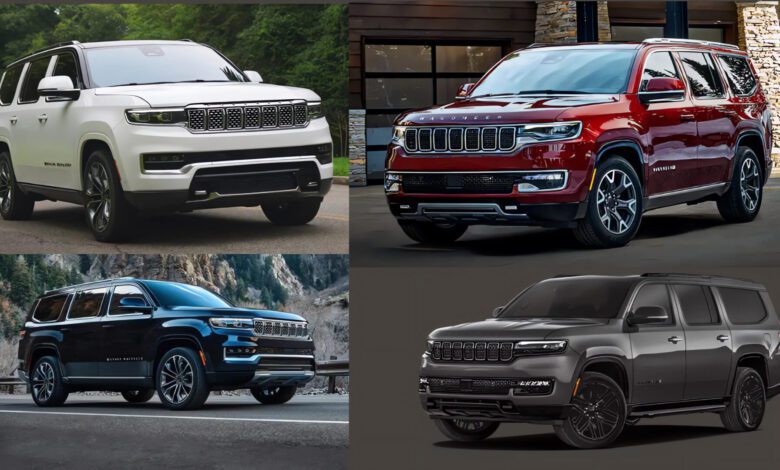
One year after the return of the new nameplate, the 2023 Jeep Wagoneer and its luxury sibling, the Grand Wagoneer, are already increasing their offerings. The Wagoneer L and Grand Wagoneer L, which have a longer wheelbase and extra legroom, make this three-row full-size SUV even more spacious. Jeep also added a new engine to the lineup, the “Hurricane” twin-turbo inline-6 with two output options, making it more competitive against the Chevy Tahoe/Suburban, GMC Yukon, Cadillac Escalade, Ford Expedition, and Lincoln Navigator. Whether or not the word “grand” appears on the badge, the Wagoneer is big on size and execution.
It’s built on the same truck platform as the Ram 1500, but it hides that part of its heritage behind a design language that’s essentially Jeep while taking the look in a more distinctive direction. However, it does not lose its utility in doing so. With 44.2 cubic feet of cargo space behind the third row, the Wagoneer L outperforms the Expedition Max and Suburban. Although not a Trailhawk or Trail Rated model, the Wagoneer can still compete when the trail winds down thanks to the available two-speed transfer case, air suspension, tow hooks, skid plates, and all-terrain tires. When properly equipped, the Wagoneer can tow up to 10,000 pounds.
While we’re already optimistic about the Wagoneer’s revival due to its size, style, available technology, and lavish interior, the addition of a more fuel-efficient engine and long-wheelbase options makes this large Jeep even more enticing.
- Pros: Class-leading space; Available technology distinguishes a true luxury interior in the Grand Wagoneer
- negatives: expensive; poor fuel economy. No significant off-road differences
What’s new in 2023?
The arrival of an extended version of the Wagoneer and Grand Wagoneer dubbed the Wagoneer L and Grand Wagoneer L is the big news for 2023. The L variants lengthen the vehicle by 7 inches between the wheels and 12 inches overall.
The availability of two versions of the “Hurricane” 3.0-litre twin-turbocharged engine is also new for 2023. More information is available in the “Fuel Efficiency and Performance Specifications” section. Apart from that, the various trim options have been simplified a bit.
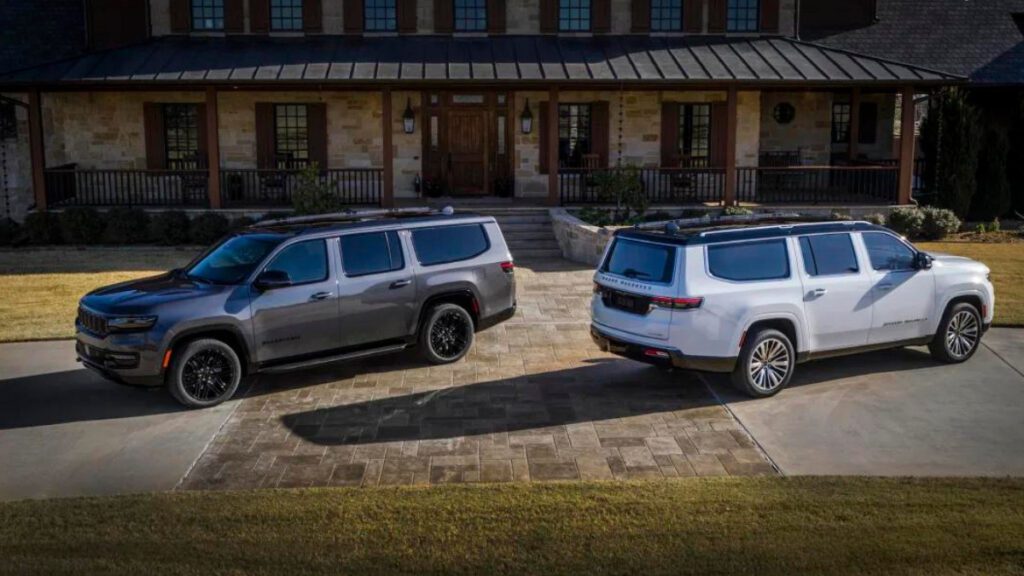
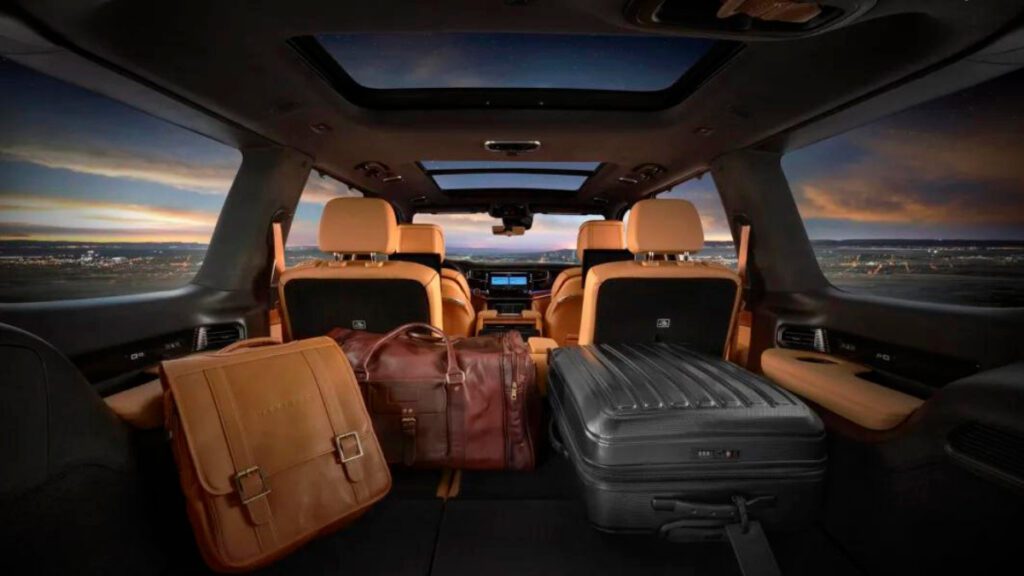
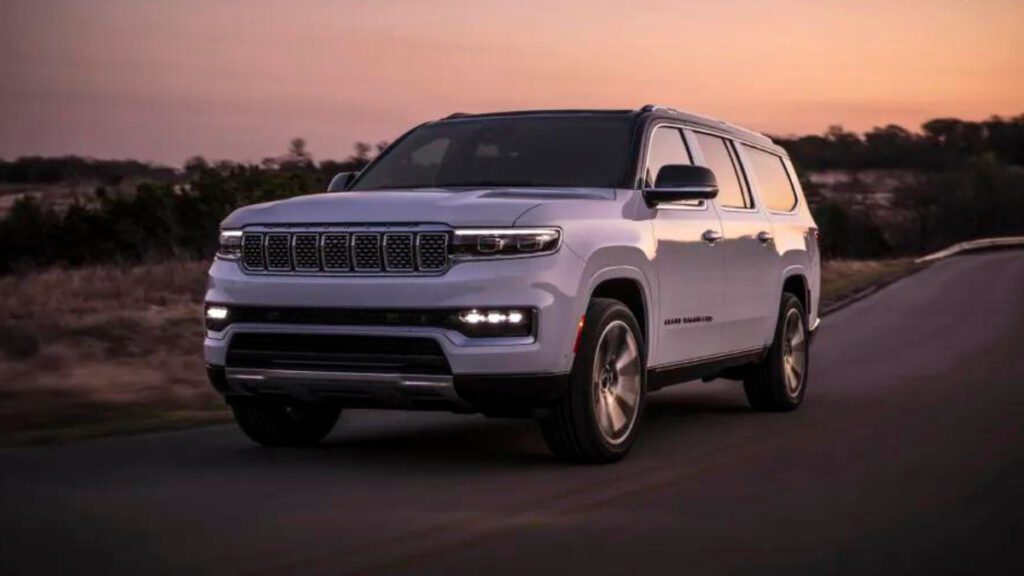
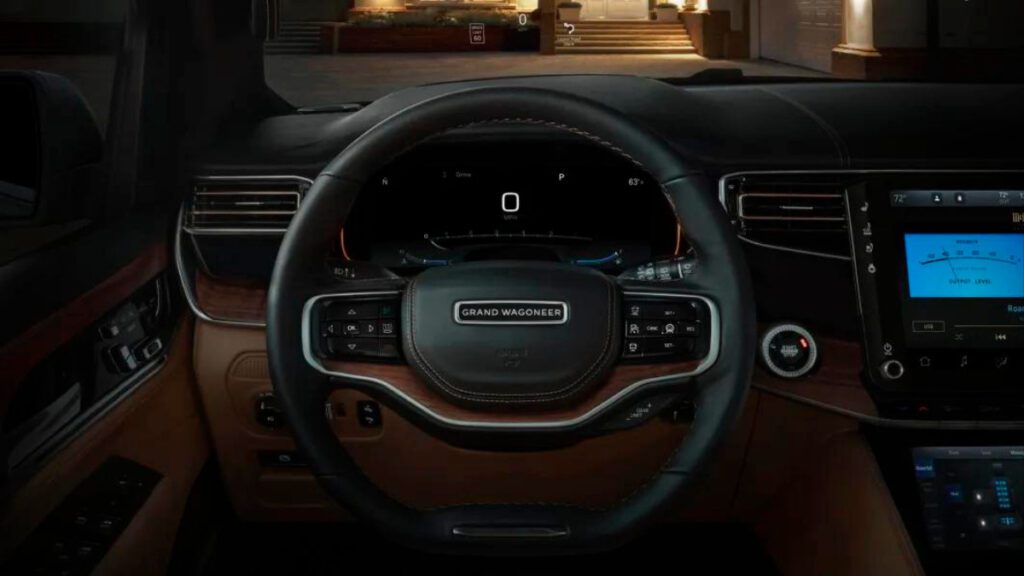
What about the Wagoneer’s cabin and in-car technology?
With its luxurious materials and amazing content, the Grand Wagoneer’s cabin is sure to attract the most attention. It may not have the Escalade’s massive OLED touchscreen or the swanky Navigator Black Label aesthetic, but it manages to be just as luxurious when it comes from a non-luxury manufacturer.
Still, the less expensive Wagoneer is bound to attract more buyers, and in some ways, it’s even cooler. It has the same cabin layout as the Grand Wagoneer (shown above), but the materials aren’t as luxurious and the feature set isn’t as extensive. However, when compared to the Tahoe or Expedition, which have radically different cabins than the Cadillac and Lincoln, the Jeep wins.
In terms of technology, there’s a lot available, which can be overwhelming, but at least most of it is controlled through the user-friendly Jeep Uconnect user interface. There’s the standard digital instrument cluster and central infotainment screen (10.1 inches in the Wagoneer and 12 inches in the Grand Wagoneer) (10.25 inches in the Wagoneer and 12.3 inches in the Grand). Some models additionally include touch screens for the climate control system and the front and rear seats. A front-passenger touchscreen and a rear-seat entertainment system with dual 10.1-inch screens are options. Thus, there are seven in total, not including the digital rear camera mirror and head-up display.
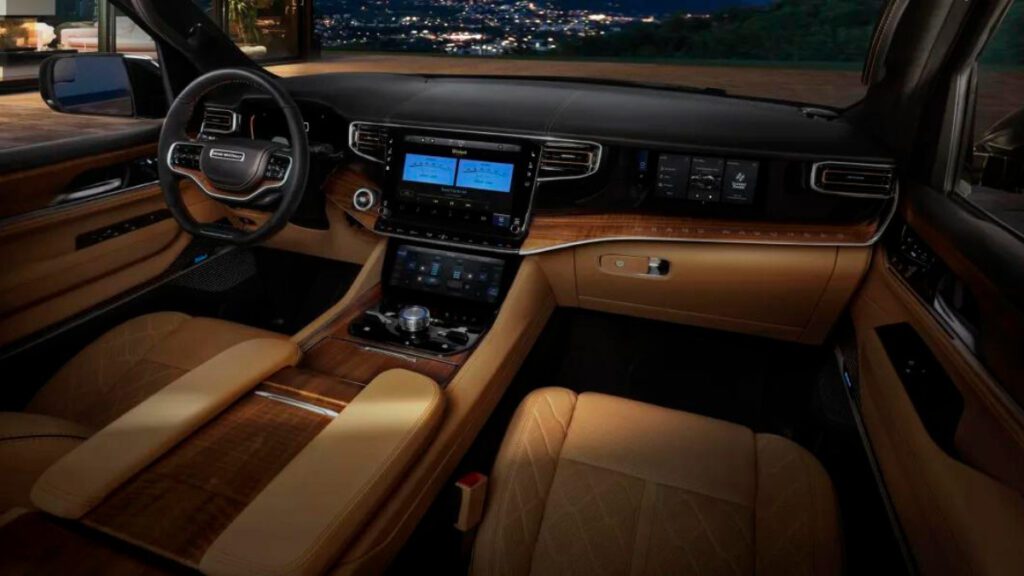
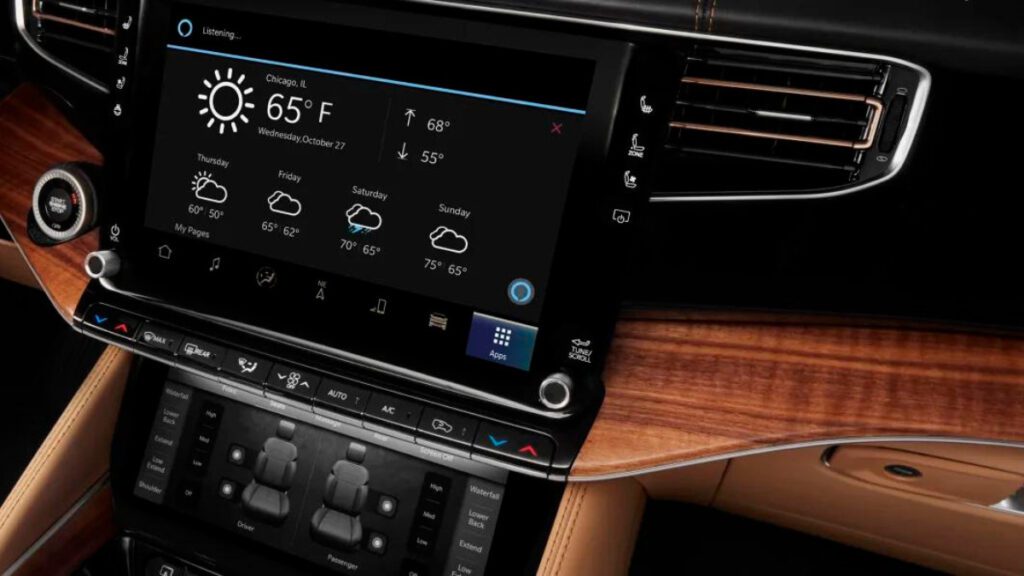
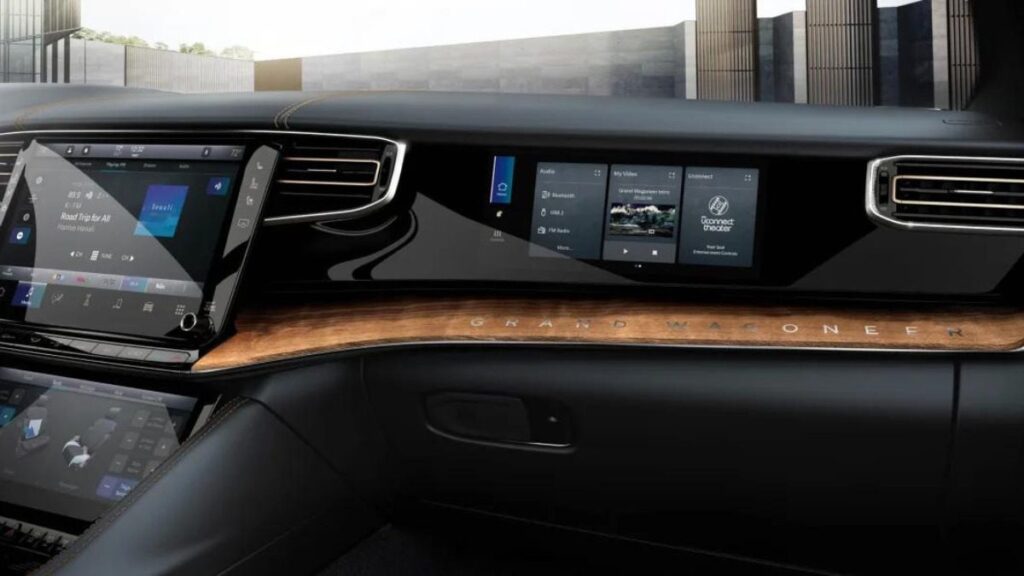
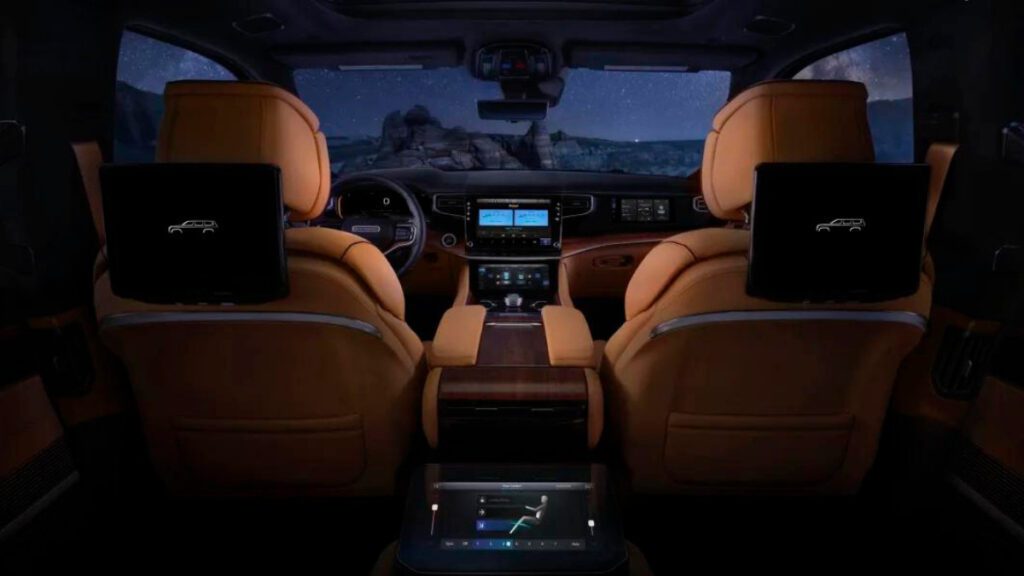
What size are the Wagoneer and Wagoneer L?
The Wagoneer and Grand Wagoneer are the same length, extending 4 inches beyond the Tahoe, Yukon, Escalade, and Expedition/Navigator. This leads to significant advantages inside, particularly in the third row. While both the GM and Ford full sizes now provide genuinely comfortable space in the rear for anyone taller than 6 feet, the huge Jeep manages to somewhat outstrip both in terms of capacity. It also does a better job of carrying the sumptuous feel of the interior into the third row. We doubt there is a better third row available.
The Wagoneer has a cargo advantage as well. Because of the additional length, it has more space behind the raised third row than the Tahoe, Yukon, Escalade, and Expedition/Navigator. We could fit all six bags from our luggage test back there, which we couldn’t do in the others. We’re talking about massive amounts of space with the third or second row down. The same goes for second-row passenger space. It should be noted that the Wagoneer comes standard with an eight-passenger, two-thirds/three-quarters-oriented seating layout, while the Grand Wagoneer is optional. The Grand comes standard with a seven-passenger, 2/2/3 configuration, whereas the Wagoneer has an option.
The Wagoneer L and Grand Wagoneer L for 2023 have a longer wheelbase and even more interior space than the basic models. With an additional 12 inches in overall length, the cargo space can easily swallow a lot more stuff, as Senior Editor James Riswick discovered when he moved houses in a Grand Wagoneer L.
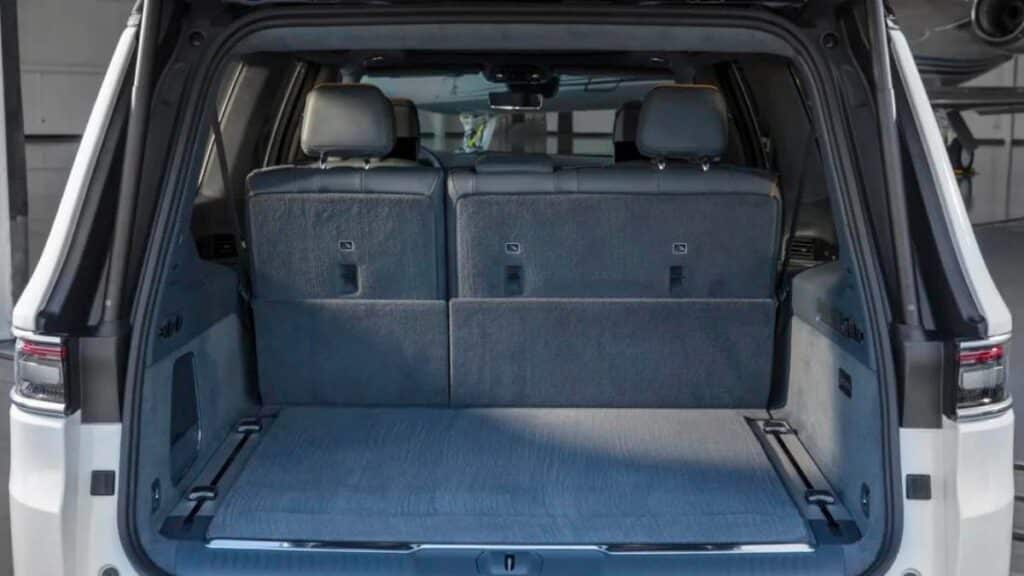
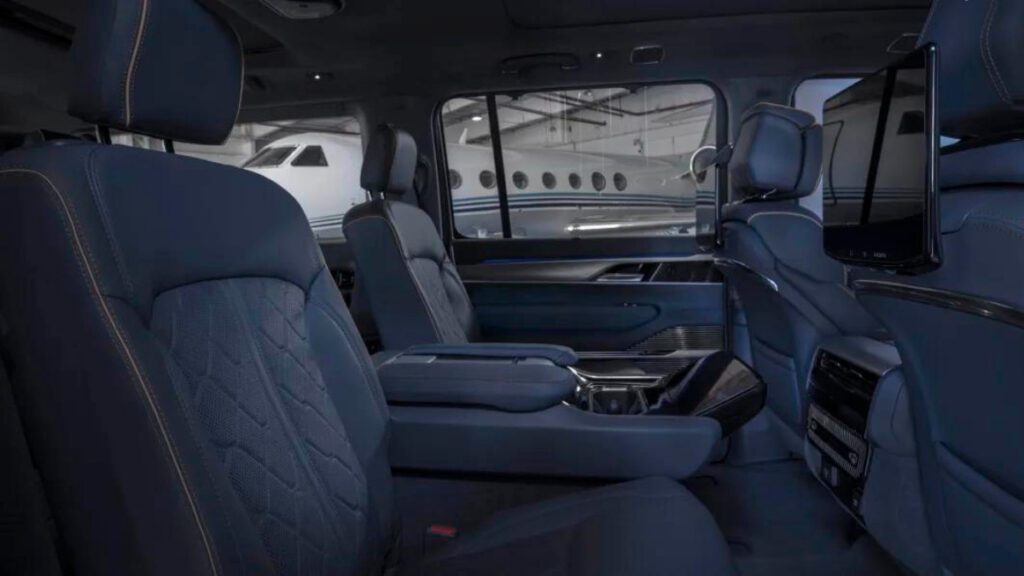
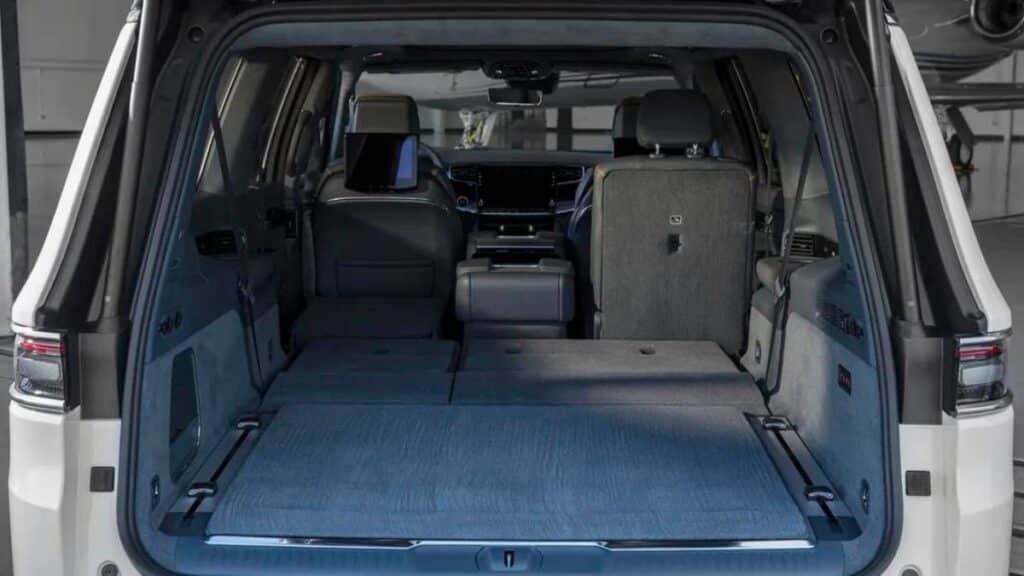

What are the fuel efficiency and performance specs for the Wagoneer?
The Jeep Wagoneer is available with three (well, really four) different powertrains, each mated to an eight-speed automatic transmission. The basic Wagoneer’s single (and unique) engine is a 5.7-litre V8 with 392 horsepower and 404 pound-feet of torque. The mild-hybrid eTorque system has a generator that is driven by a belt and a small lithium-ion battery that is charged by regenerative braking. Together, they can give an extra 130 lb-ft of torque for a short time. It also allows the engine to shut down when decelerating. It gets 16 mpg in the city, 22 mpg on the interstate, and 18 mpg combined in two-wheel-drive variants. With four-wheel drive, the mileage drops to 15/20/17.
The “Hurricane” 3.0-litre twin-turbocharged inline-six engine is standard in the Wagoneer Series II, Carbide, Series III, and Wagoneer L, producing 420 horsepower and 468 lb-ft of torque. It scores 17/24/20 in 4×2 models and 16/23/19 in 4×4 models. This is the only engine in the Wagoneer that offers competitive fuel efficiency.
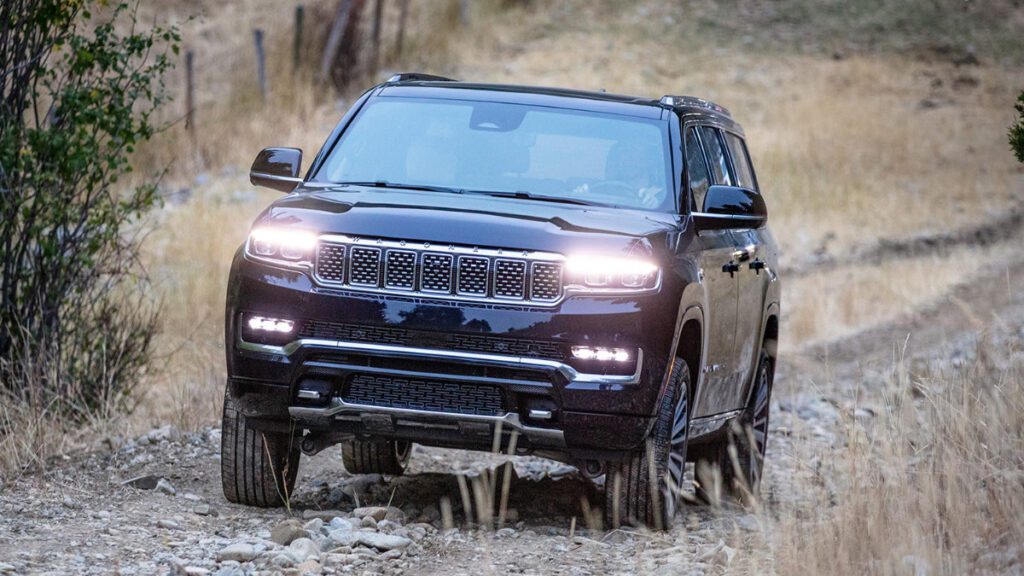
The Grand Wagoneer’s base engine (and available as a free option on Grand Wagoneer Obsidian versions) is a 6.4-litre V8 with 471 horsepower and 455 lb-ft of torque. This is the least economical vehicle in the series, rating at 13/18/15 mpg and costing hundreds more to fuel up than a Navigator.
Nevertheless, the Hurricane 510, an enhanced version of the 3.0-litre Hurricane, is available in the Grand Wagoneer Series II and III, as well as the Grand Wagoneer L, with 510 horsepower and 500 lb-ft of torque. The standard-wheelbase Grand Wagoneer gets 14/20/17 mpg, while the L gets 14/19/16 mpg. With a Lincoln Navigator, you’ll get significantly better fuel economy and spend far less money on gasoline each year.
With both the 5.7-litre V8 and the conventional 3.0-litre I6, Jeep recommends mid-grade (89 octanes) fuel, while regular gas is “okay.” Premium fuel (91 octanes) is required for the 510-hp Hurricane I6 and is suggested for the 6.4-litre V8.
How is the Wagoneer to drive?
For better or worse, this massive Jeep travels the road like a giant ocean liner. You’re always aware of its massive dimensions and massive weight, while the air suspension, which is standard on the Grand and optional on the Wagoneer, allows for some lateral swing when cornering. While driving into a parking lot, one driver smacked his head on the B-pillar. It doesn’t happen on the more stable Escalade. At the same time, an ocean liner is a very pleasant, quiet, and luxurious mode of transportation. The ride is great, and there’s a strong sense of stability during highway driving (pun not intended).
It is calm, pleasant, and fun, even with the hustle and bustle. The steering is accurate and has some feel to it. GM SUVs outperform Jeeps in several categories. Likewise, the Jeep is well-built, with few of the vibrations and jitters that characterize body-on-frame SUVs. The additional length of the L versions does not affect the driving experience. It’s a bit tricky to steer at low speeds because of the larger turning circle and more cars to manage, but overall it’s more like a traditional Wagoneer.
In terms of off-road capability, the Wagoneer isn’t trail-rated, so don’t expect it to travel to the same locations as the Grand Cherokee. Its large size and lack of pivot joints limit its capabilities. It still has up to 10 inches of ground clearance and a low-range transfer case.
We haven’t had a chance to put the Wagoneer’s standard 5.7-litre V8 through its paces yet, but given its power output and 6,000-pound curb weight, it seems like a safe bet that acceleration will be on par with GM’s 5.3-litre V8. The Grand Wagoneer’s 6.4-litre V8 engine delivers smooth, quiet, and smooth acceleration without the squeaky sounds seen in other Jeep and Dodge applications. It also consumes gasoline like an ocean liner.
The new Hurricane inline-six engines are undoubtedly the best. The throttle response is somewhat less crisp than the 6.4 V8’s, but only slightly. And in exchange for slightly less throttle response, you get a lot less torque. This engine does not need much effort to start. The turbines reel quickly, and the power delivery is smooth. The Hurricane 510 version certainly sounds more powerful, though it’s a bit academic. Sure, it sounds faster, but the regular Hurricane feels far from underpowered, and the difference isn’t big enough that we chose the Grand over the regular Hurricane based solely on engine performance, especially given the base Hurricane’s much better fuel efficiency.
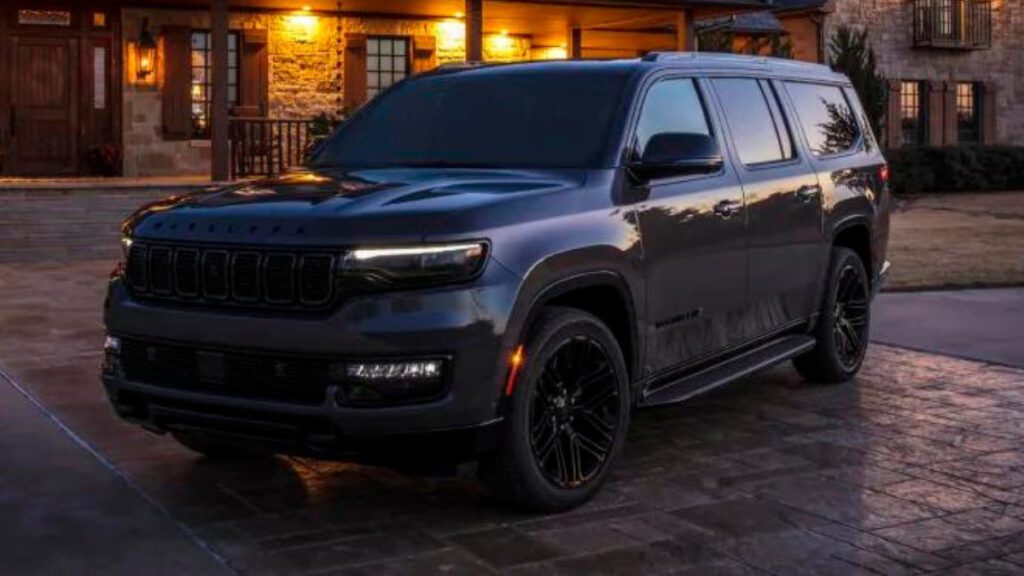
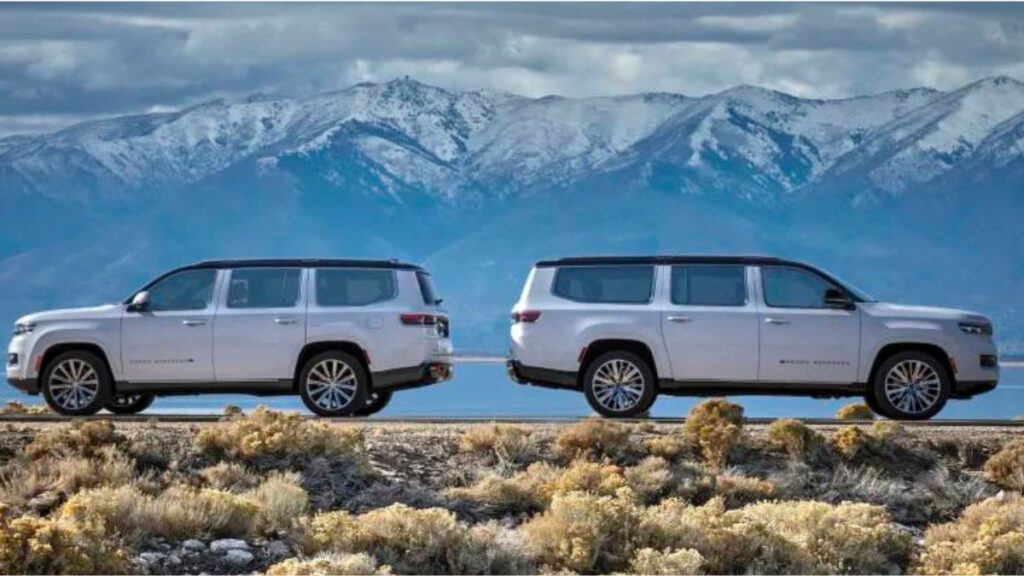

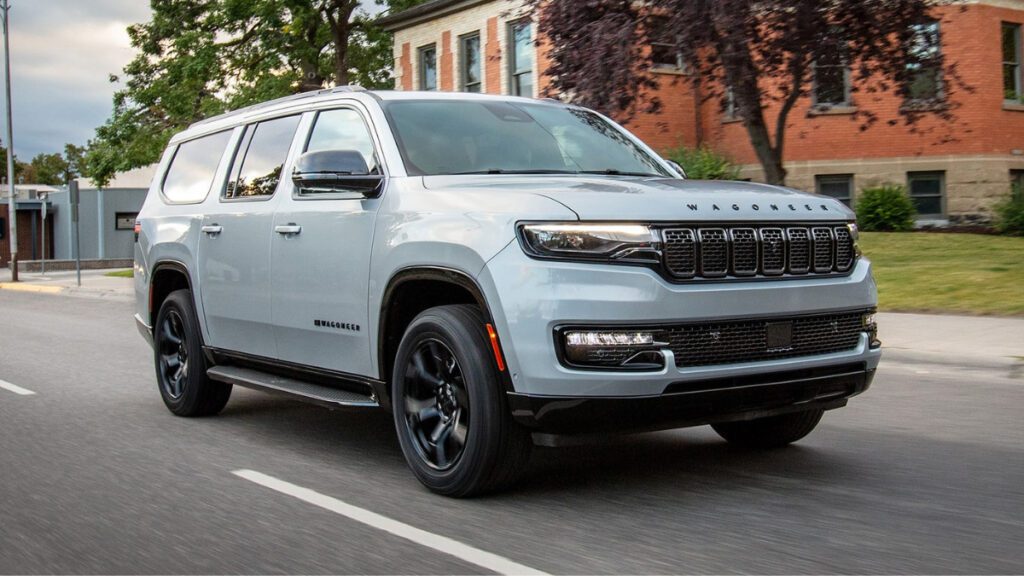
What is the price of the 2023 Jeep Wagoneer?
The Wagoneer suite, as one would expect from a range that starts at $60,000 and includes versions for more than double that, has a plethora of accessible extras to pick from if you have the credit to cover them. The basic Wagoneer has leather seats that are heated and cooled, Alpine sound, a 10.25-inch Uconnect display with navigation, power-folding mirrors, remote start, and more. The Grand Wagoneer is a step up in quality, standard features, and price. It comes with a standard air suspension, a 12.3-inch display, a McIntosh audio system, nicer leather, heated captain’s seats in the second row, and more. Whatever luxury features you add, we adore the turbocharged I6 engines, so we’d start our search with the Wagoneer Series II.
The standard Wagoneer 4×2 costs $60,995, not including the $2,000 destination charge. Adding four-wheel drive to most trims adds $3,000 to the overall price while selecting the L version adds another $4,000. The luxury Grand Wagoneer begins at $90,640 and comes standard with four-wheel drive. Adding the L to the Grand Wagoneer raises the price by $4,000 across the board. To give you an idea of the whole pricing range, the Grand Wagoneer Series III Obsidian starts at $114,635 before options, although there aren’t many choices left at that point.
The following is the entire price breakdown by trim, including destination:
Wagoneer
- Wagoneer 4×2: $60,995
- Wagoneer 4×4: $63,995
- Series II 4×2: $67,725
- Series II 4×4: 71,725
- Carbide 4×2: 70,775
- Carbide 4×4: 73,775
- Series III 4×2: $73,865
- Series III 4×4: $76,865
Wagoneer L
- Wagoneer L 4×2: $64,495
- Wagoneer L 4×4: $67,495
- Series II 4×2: $70,725
- Series II 4×4: 73,725
- Carbide 4×2: 73,775
- Carbide 4×4: 76,775
- Series III 4×2: $76,865
- Series III 4×4: $79,865
Grand Wagoneer
- Grand Wagoneer: $90,640
- Series II: $97,735
- Obsidian: $103,230
- Series III: $109,995
- Series III Obsidian: $111,635
Grand Wagoneer L
- Grand Wagoneer: $94,140
- Series II: $100,735
- Obsidian: $106,230
- Series III: $112,995
- Series III Obsidian: $113,990
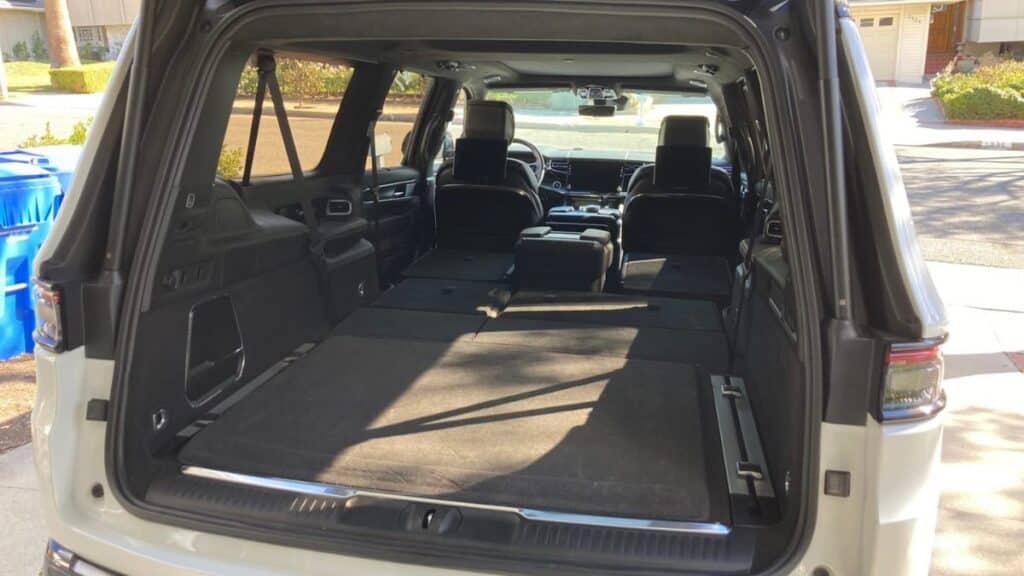
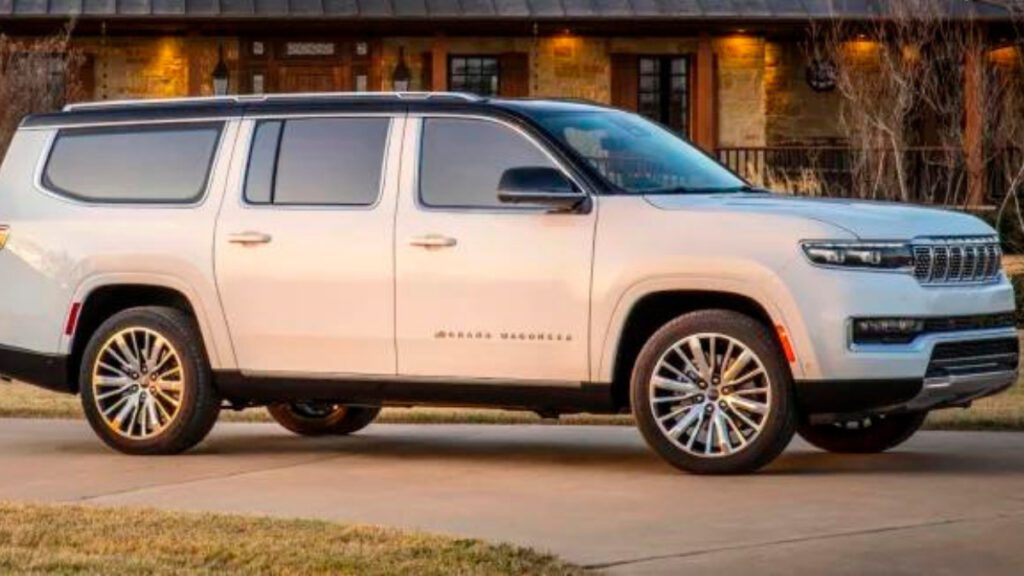
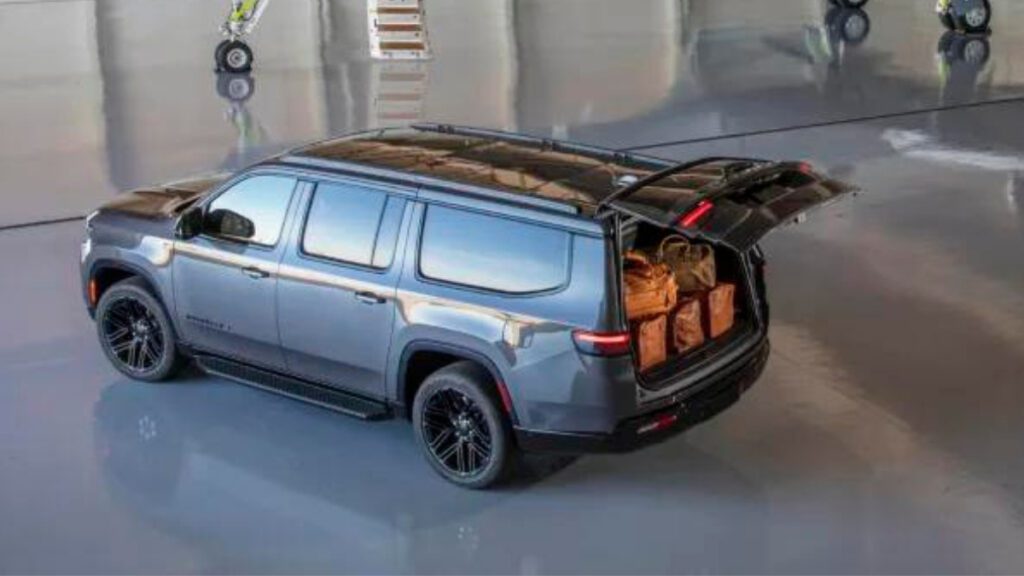
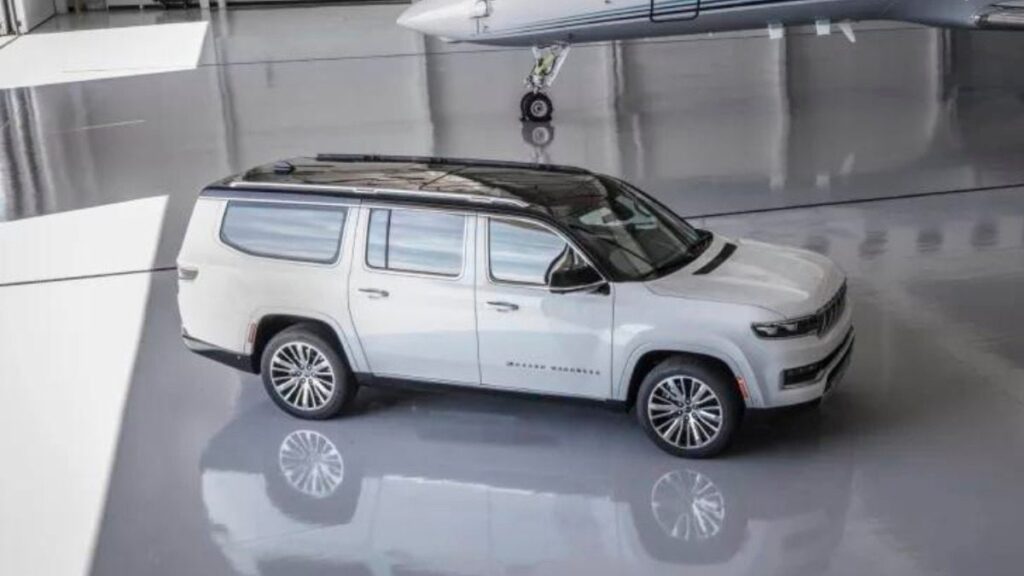
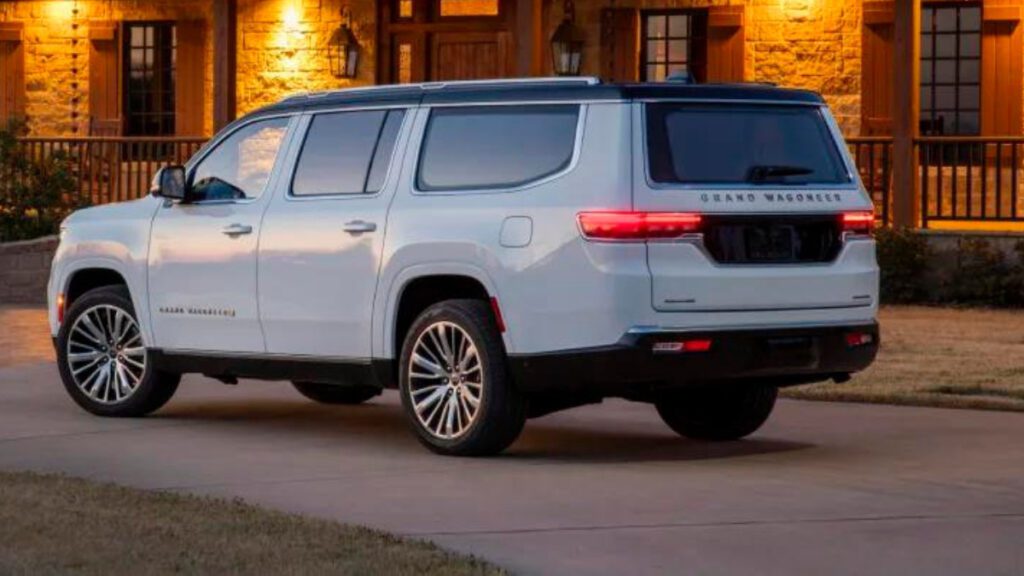
What are the safety ratings and features of the Jeep Wagoneer?
Forward collision warning and the automated emergency braking are standard on all 2023 Wagoneers, as are blind-spot and rear cross-traffic warning systems, trailer sway control, and front and rear parking sensors. Stop-and-go adaptive cruise control and lane-keeping assist are optional on the Wagoneer and Wagoneer L, but they come standard on all other trim levels. The Grand comes standard with a 360-degree parking camera, while the Wagoneer has an option.
At the time of this writing, neither the NHTSA nor the Insurance Institute for Highway Safety had crash-tested the Wagoneer.




